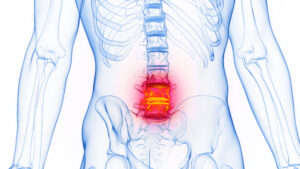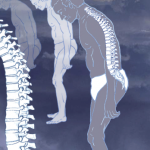10 abstracts from ACR Convergence 2024 stand out from the pack
WASHINGTON, D.C.—Our understanding of axial spondyloarthritis (axSpA) has really changed, especially with regard to male-female differences. In this report, we identify important research on axSpA presented at ACR Convergence 2024, summarize the abstracts and comment on why each is important, addressing the relevance for clinicians and the potential impact on future research.
Has the Pattern of axSpA Shifted?
Abstract 0558: Coates et al.1
The diagnosis of axSpA is often delayed, as demonstrated clearly in this study from a large claims database. In this analysis, delay was considered as primary (i.e., the time from the earliest diagnosis of back pain until the first rheumatology visit) or secondary (i.e., the time from the first rheumatology visit to the diagnosis of axSpA). For the population as a whole, 41% had a total time to diagnosis of five years or more. Among those patients who saw a rheumatologist before diagnosis, the median primary delay was 2.62 years (1.07, 4.60) years while the secondary delay was 1.69 (0.24 to 3.72) years.
For a condition such as axSpA, delay may not be unexpected for important reasons: Back pain is common in the population; symptoms of axSpA are not well understood by the various providers who see patients with back pain; and imaging studies are often unrevealing. Delays by rheumatologists are perhaps more interesting and surprising because rheumatologists should be well aware of the complicated issues in diagnosis. Nevertheless, even rheumatologists may have difficulties in determining the presence of axSpA as the source of patient symptomatology.
One factor that may be contributing to delay relates to bias. The classic description of axSpA suggests a disease of young men. In this study, however, the mean age of axSpA diagnosis was 53.2 (14.9) years and 63.5% of the patients were women. These numbers are not far away from those of patients with rheumatoid arthritis (RA). Has the pattern of axSpA changed over the years, or is it our understanding of disease that has changed so that even rheumatologist may be uncertain about its presence?
The authors conclude, “This study highlights the need for medical education on inflammatory back pain and axSpA.” I agree, but for education to be effective, it is essential to know what should be taught.
The Importance of Study Populations
Abstract 0539: Puche-Larrubia et al.2



